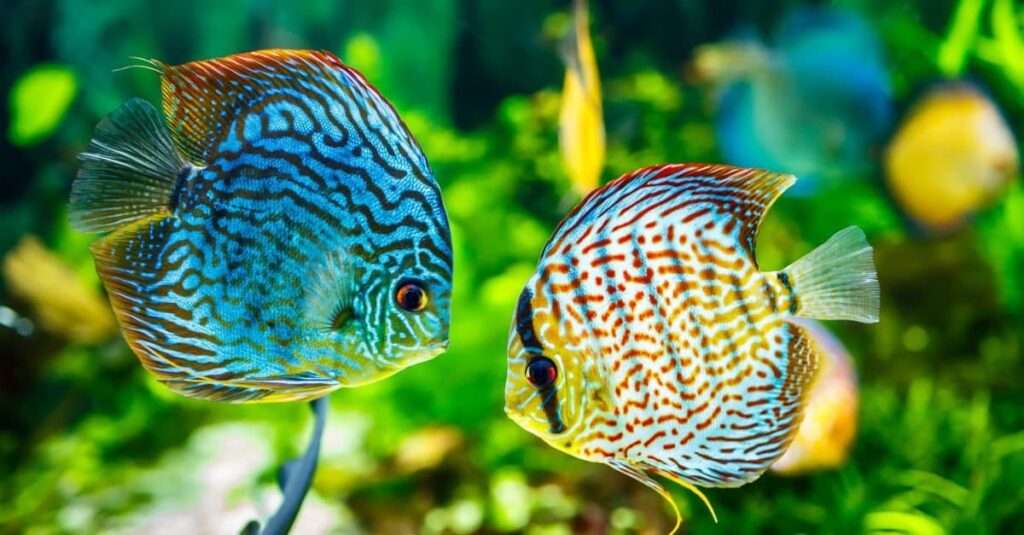
Size
20 centimeters (7.9 in)
Physical Characteristics
It features a disk-shaped profile, a body that is highly compressed on the sides, and enormous, beautiful fins. This species can be found in a variety of colors, including yellow, white, orange, red, blue and brown, green, and black. Iridescence, streaks, and vertical bands distinguish it.
Temperament
Sadly, despite the fact that discus are visually stunning, they lack individuality. Discourse is still fascinating despite that, though!
Discos are timid and laid-back fish. They typically prefer to remain close to one another while floating lightly in the water column. On occasion, they will engage with their environment by looking for food and shelter. However because they are still cichlids, these fish are susceptible to aggression, particularly in males during the spawning season.
It’s also vital to know that discus people tend to be quite fussy eaters. This can be very upsetting because the health of your fish depends greatly on a constant, good diet. Further tank maintenance is required to clean any uneaten food.
Habitat
The lowland Amazon basin is home to a variety of Symphysodon species, which are a part of the incredibly complex Neotropical fish fauna. S. discus is only found in blackwater settings, however they occasionally encounter whitewater flash floods.
Keeping as Pet

- Tank Size
Discos aren’t as challenging to maintain as some claim. They do, however, require a lot of room to grow. You need a tank that is at least 75 gallons (283.9 L) in size and is at least that size since these fish must be housed in groups. Many hobbyists think that these fish thrive in tanks with no bottom. To maintain steady water parameters, they are simpler to clean.
- Water Parameters
Moreover, dises require warmer water temps to be maintained. The recommended temperature range for keeping them is between 85 and 86 degrees Fahrenheit (29.4 to 30.0 degrees Celsius), while some enthusiasts prefer to keep them closer to 90 degrees Fahrenheit (32.2 degrees Celsius). pH levels should always be between 6.5 and 7.5. Except if you intend to breed, general hardness (GH) and carbonate hardness (KH) are irrelevant.
- Feeding
As long as they get the correct foods, discus are typically more than happy to eat. The food should be appropriate for the fish’s tiny mouths. Bloodworms are a favourite food of discus, and because they are long and slim, they are very simple to consume. A great option for a discus snack is bloodworms, whether they are frozen, freeze-dried, or alive. They shouldn’t, however, be the main component of the diet.
Instead, feed your fish beef heart, blackworms, and granules made specifically for discus as its main diet. Just in case your fish decides one day that it detests everything you have to offer, keep a wide variety on hand!
- Tank mates
While choosing tank mates, it’s important to keep in mind that discus are sluggish feeders and require warmer water. The ideal tank companion will be able to handle greater temps and be out of the way while feeding, ideally creating little to no extra mess!
Cardinal tetras and Sterbai corydoras are the most frequently kept discus tank mates. Angelfish can be successful for some discus anglers, although they can develop territorial behavior.
Table





